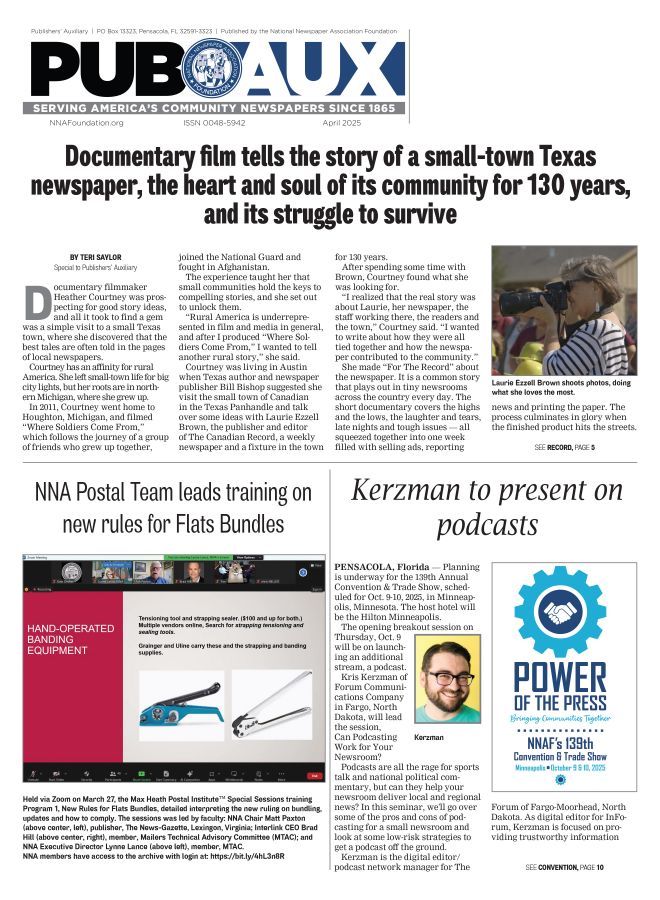Public Notice Year in Review
Public Notice Resource Center & NNA
Jan 1, 2023
When Gov. Ron DeSantis signed House Bill 7049 in May, Florida became the first state to enact a law allowing local governments to publish notices on their own websites rather than in newspapers.
But the big takeaway in Florida turns out to be that the passage of the bill was only the beginning of the story, not the end. Local governments in the Sunshine State don’t appear to be in a rush to abandon newspaper notice when HB-7049 takes effect on Jan. 1. In fact, the only county that has formally considered the issue decided to stick with newspapers. Public officials’ response to the new law is proving the enduring efficacy of providing official notice via local newspapers.
Florida HB-7049 wasn’t the only public notice story that caught our attention this year. New laws expanding official-newspaper eligibility mandates and requiring newspapers to post their notices on the web were also notable developments. Customer service issues repeatedly surfaced in 2022, as well.
The statutory criteria necessary to qualify as an official newspaper might need to be adjusted when newspapers close, consolidate and/or transition to web publication as an alternative to print distribution, making it more difficult for counties and municipalities to find outlets to publish their notices in a timely manner. The number of legislative proposals seeking to address those issues by liberalizing eligibility requirements increased in 2022 and is likely to continue to grow in the coming years.
In May, Minnesota passed this year’s most significant bill expanding official-newspaper eligibility. House File 3682 authorized e-editions to help meet print-publication frequency standards, eliminated specific circulation minimums and reduced minimum “printed space” requirements. South Dakota approved a law authorizing e-editions to satisfy print-publication standards, as well. Indiana, Missouri and Oklahoma also considered bills that would have liberalized eligibility requirements, but they didn’t make it out of committee.
The public notice bills in Minnesota and South Dakota also included provisions requiring official newspapers in those states to publish notices on their press associations’ statewide public notice website. Michigan and Nebraska approved such legislation, as well. There are now 18 states that have enacted newspaper web-posting laws.
Michigan’s Senate Bill 258 is the most comprehensive web-posting law yet conceived. In addition to mandating that official newspapers in the state publish notices on their own website, as well as the Michigan Press Association statewide website, SB-258 adopts standards for the duration, placement, accessibility and searchability of the notices; requires newspapers to provide a method for the public to receive notices via text and email; and includes novel provisions establishing standards for archiving, verification and third-party independence. Those provisions require newspapers to maintain “a permanent and complete printed copy of each published edition that contains the notice for archival and verification purposes” and forbids newspapers “controlled by the person on whose behalf the notice is published” to qualify to publish notices.
In addition to its eligibility and web-posting requirements, Minnesota HB-3682 included a provision eliminating the fee otherwise charged for a public notice if a mistake is made in the notice and it is the fault of the newspaper. In previous years, such a provision would have been considered unusual, but in 2022, several other states also considered legislative provisions that would have relieved local governments of the consequences when a newspaper fails to publish a notice in a timely manner.
Those provisions are the political manifestation of the newspaper industry’s customer service problems. It’s an issue that afflicts a small but significant cohort of papers, and it appears to be growing worse. There was a proliferation of anecdotes and news stories this year about newspapers that made it difficult or impossible for their customers to publish notices. In some cases, government functions had to be delayed or repeated as a result of their neglect.
The scale of the problem is evident any time a group of press association directors meet and talk about public notice. During a roundtable discussion at the Newspaper Association Managers convention this summer in Austin, Texas, the topic dominated conversation. One director after another complained about member papers that have little connection to the communities they serve and make it more difficult for their press association to protect newspaper notice in the state legislature.
The problem afflicts papers both large and small, but the biggest offenders are corporate newspaper chains. Newspapers need to adapt to survive, and sometimes that requires cutting personnel. But the industry must find a way to be able to service its customers despite the cuts, and that isn’t always happening in the public notice space. Executive directors who formerly relied on local publishers to solve publishing issues and maintain fruitful relationships with local officials often have nobody to turn to. There are now multiple papers in every state that don’t even employ a publisher, which attenuates local relationships and accountability at those publications.
Those factors played a significant role in the Florida legislature’s passage of HB-7049, and they threaten to torpedo newspaper notice in other states, as well. If newspapers hope to continue to serve as the government’s official provider of notice, they need to make it as easy as possible for customers to publish their statutorily required notices. It’s as simple as that.










